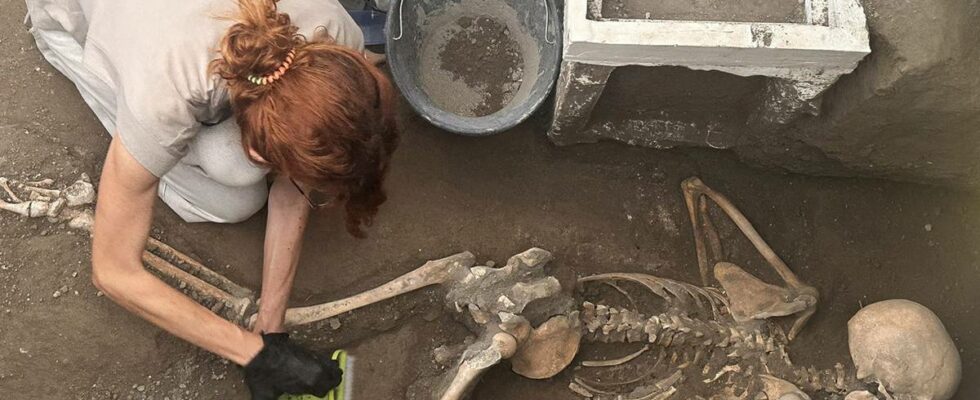It has been 1945 since the volcano Vesuvius spewed its wrath against the then lively port city of Pompeii in Italy. Several thousand people lost their lives in the inferno. The city was covered by a thick layer of ash and was completely hidden until 1748. Seeking refuge from the lava Recently, archaeologists found the remains of a woman and a man in a small bedroom in a house that was being rebuilt when the eruption occurred in 79 AD time. – Such discoveries can tell us an incredible amount. That’s according to archaeologist Christina Videbech at the University of Bergen. – Firstly, it is interesting why the man is lying on the floor and the woman in bed. That, as well as the others found with the woman, suggests that she was more prosperous than he. The victims who have now been found had chosen to seek refuge in a small room. There they waited for the eruption to end, but volcanic pumice blocked the door and prevented them from getting out. They were killed by what is called the pyroclastic cloud that followed the eruption. This is a cloud made up of toxic gases from the eruption and moves very quickly. The woman was found in what had been the bed in the small bedroom. Photo: Parco Acheologico di Pompei / Reuters The discovery of a bed Since the rediscovery of the city in 1748, archaeological excavations have uncovered around two thirds of the city. Then with street networks, public squares and buildings, temples and residences, equivalent to more than 2 million cubic meters of masonry. – Pompeii is absolutely invaluable for understanding the people who lived in the Roman Empire, says Christina Videbech. She seems to have preserved things that we simply cannot find in other contexts. Even bread, head lice and faeces are preserved. Large parts of Pompeii have now been excavated and partially brought back to how it looked on that dramatic day in the year 79 AD. Photo: HANDOUT / AFP Lying by the bed Several hundred thousand objects have been unearthed, and in total approximately 20,000 square meters of wall painting and 2,000 square meters of mosaics. The discovery of the skeletons of the woman and the man may result in even more knowledge about daily life in Pompeii. The woman was found on a bed, and around her were gold, silver and bronze coins, gold jewelery and earrings with pearls. The remains of the man were at the foot of the bed. – Maybe he was her slave, says Videbech. The excavations in Pompeii have uncovered art from ancient times that depicts the relationship between mythical figures and humans. Photo: HANDOUT / AFP Many have been found Since the excavations of Pompeii began in the 19th century, many remains have been found, around 1,300 in number. Today, the city is a tourist mecca on Unesco’s world heritage list, but also a portal to what was then a modern city. – The ability to analyze the invaluable anthropological information about the two victims makes it possible for us to collect a large amount of data about daily life in Pompeii. This is according to the director of the Pompeii excavations, Gabriel Zuchtriegel. When the archaeologists uncovered a new room where slaves lived in 2021, director Zuchtriegel was very excited. – This is a window into the reality of people that rarely appears in historical sources, said the German-Italian scientist at the time. UiB archaeologist Christina Videbech is the co-ordinator. – Pompeii is a “snapshot” of a day in the Roman Empire. Everyone was going about completely everyday things until what must have seemed like the end of the earth suddenly happened. This is how the artist saw the brutal eruption of the volcano Vesuvius in the year 70 AD. Photo: Wikicommons Pompeii Pompeii was a Roman city in Campania in Italy, south-east of Naples. In the year 79, the city was completely destroyed as a result of an eruption in the volcano Vesuvius. About 2,000 of the city’s between 8,000 and 10,000 inhabitants were killed. The rest managed to escape. The town was rediscovered in 1748 and has since been the site of extensive archaeological excavations. (Source: forskning.no) (Sources: NTB, snl.no, Christina Videbech) Published 12.08.2024, at 22.06
ttn-69
Man and woman found how they died in Pompeii – news Urix – Foreign news and documentaries

